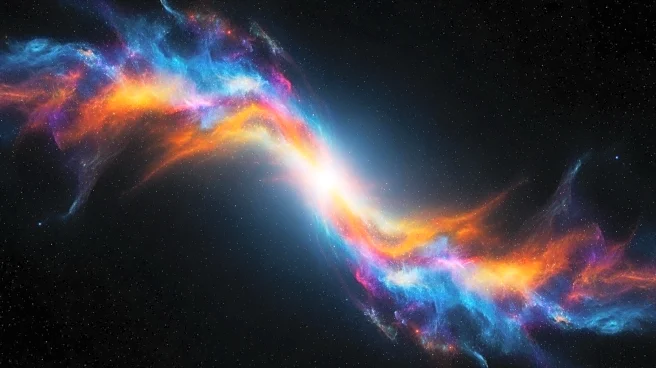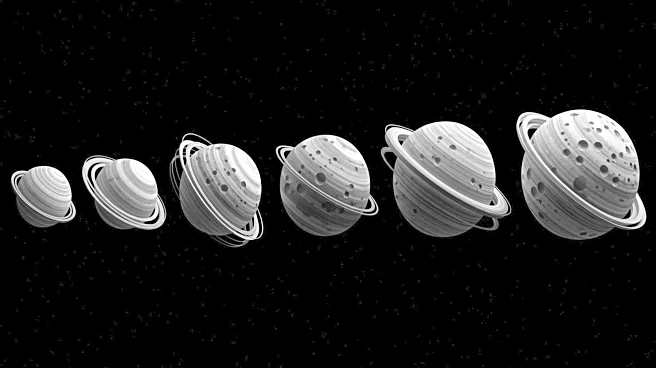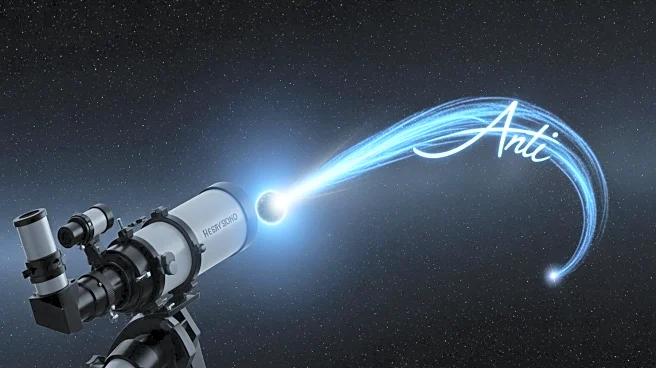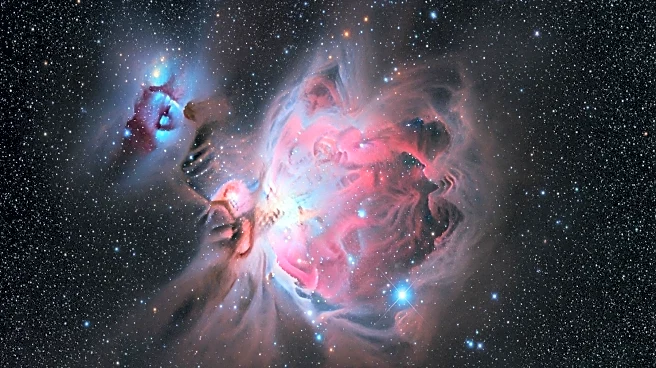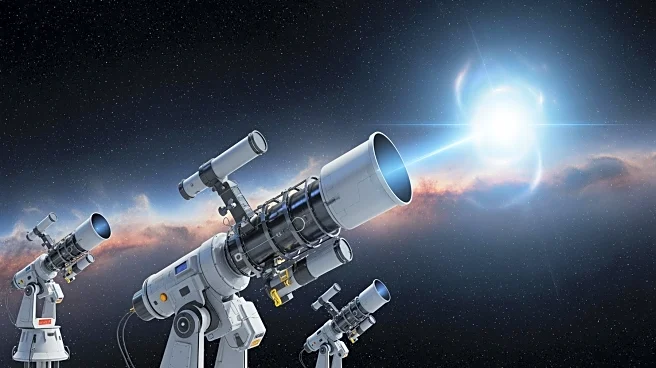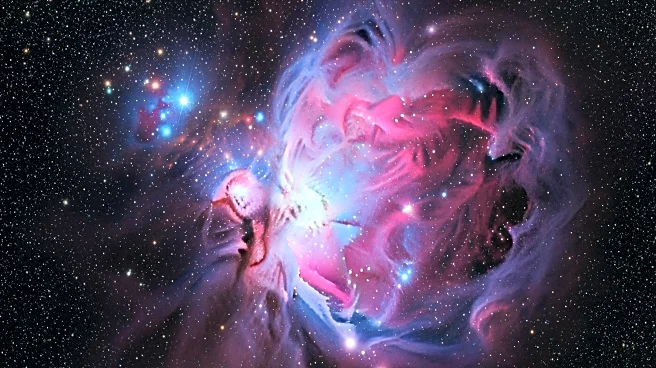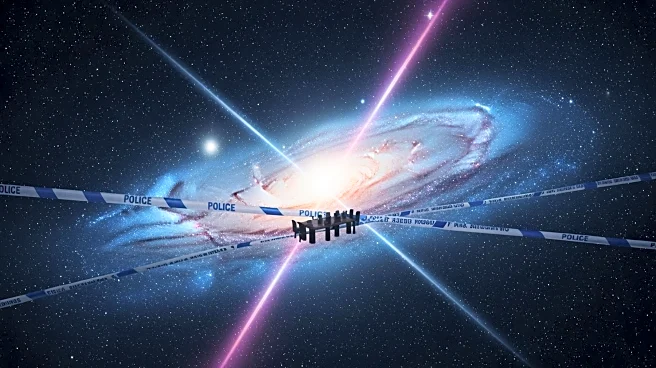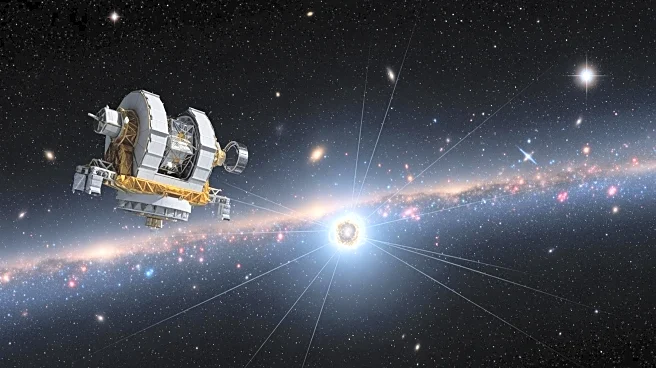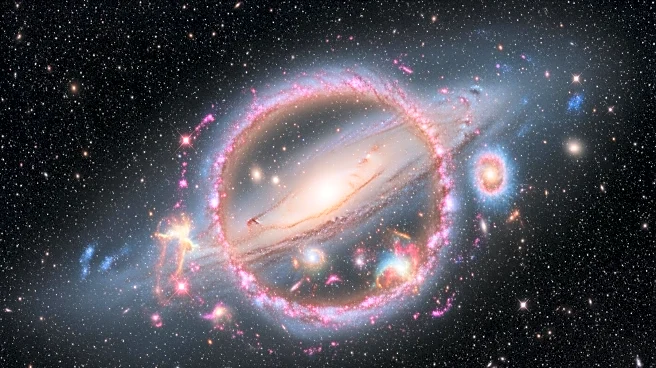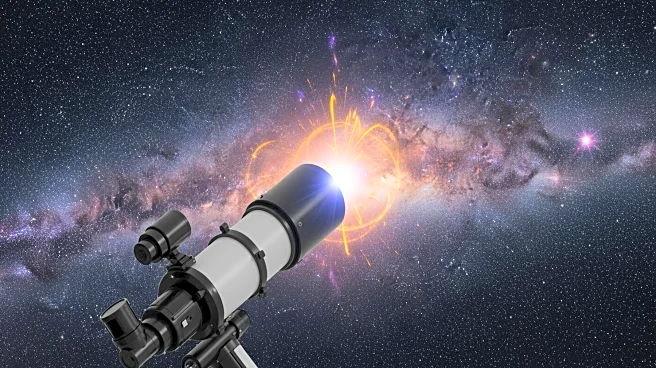What's Happening?
The European Space Agency's Gaia space telescope has revealed a colossal wave moving through the Milky Way, affecting stars tens of thousands of light-years from the Sun. This wave, akin to ripples in a pond,
influences the motion of stars across the galaxy's disc. The discovery was made by tracking the movements of young giant stars and Cepheid stars, which are known for their predictable brightness variations. The wave extends over a vast section of the galactic disc, impacting stars located approximately 30,000 to 65,000 light-years from the galactic center. The cause of this wave remains uncertain, with possibilities including a past collision with a smaller galaxy.
Why It's Important?
This discovery is significant as it provides new insights into the dynamic nature of the Milky Way. Understanding the wave's impact on stars and potentially galactic gas could offer clues about the galaxy's history and structure. The findings may also help astronomers refine models of galactic motion and evolution. The ability to map and analyze such large-scale phenomena enhances our comprehension of the universe and could lead to further discoveries about the Milky Way's interactions with other celestial bodies.
What's Next?
Further research is needed to determine the cause of the wave and its relationship to other galactic structures, such as the Radcliffe Wave. The upcoming fourth data release from Gaia will provide more precise positions and motions for Milky Way stars, aiding scientists in creating better maps and advancing understanding of these features. Continued analysis may confirm whether the wave resulted from a past galactic encounter or collision.
Beyond the Headlines
The discovery of the wave raises questions about the memory of galactic gas and its role in star formation. If gas participates in the wave's motion, it could influence the birth and evolution of new stars, preserving information about past galactic events. This could have implications for understanding the lifecycle of stars and the formation of galactic structures.
